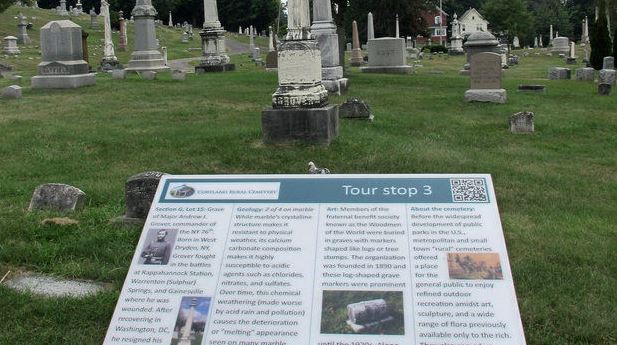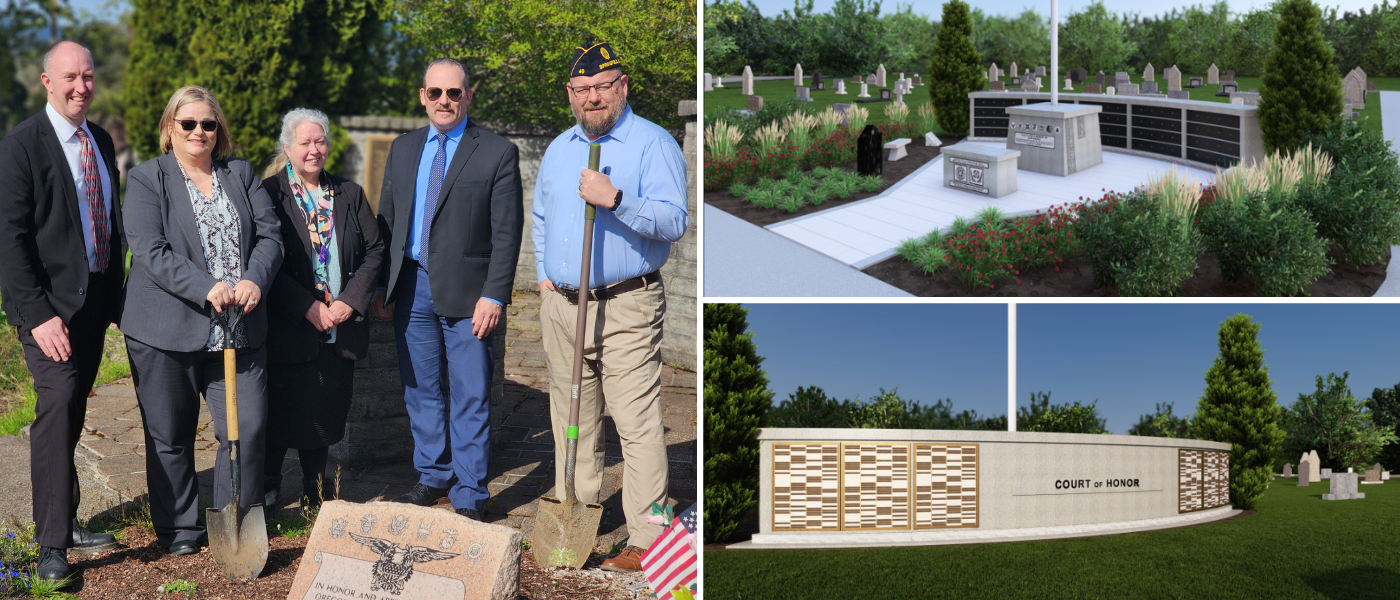Cemeteries get creative to stay afloat in dying industry
Article originally appeared on Penn Live
CORTLAND, N.Y. (AP) — Forget the old joke about people dying to get in. Cemeteries are getting more interested in attracting the living.
With cremations expected to outpace burials in the United States for the first time this year, it’s a way for cemeteries that rely on the sale of gravesites and services to make up for lost revenue.
“We have to get creative,” said Steven Lillie, president of the rural Black River Cemetery Association. “A lot of people are getting cremated and sitting on someone’s mantel forever, or getting scattered.”
The Cortland Rural Cemetery this spring cut the ribbon on a new “cemetrail” and arboretum, which encourage visitors to wander the 44-acre site and linger at new signposts to read about the people buried there, the geology of the rock used for markers, the artistic style of the monuments and the trees that shade them. The 20 stations, created in collaboration with the State University of New York at Cortland, include QR codes for smartphone scanning.
“We decided to try to reposition the cemetery as a cultural and historical and natural place, as opposed to just a place to memorialize people,” said John Hoeschele, president of the Cortland site’s board of directors. He coined the term “cemetrail,” which is funded by a $30,000 “Operation Greenspace” grant from the J.M. McDonald Foundation.
“You can find all kinds of grants; for trails, for concerts. You can find grants for art shows and genealogy. All of these kinds of things open up the doors for grant dollars whereas just cemeteries — nobody funds cemeteries.”
A July report by the National Funeral Directors Association said that by the end of 2015, the cremation rate will have increased by more than 50 percent over the last 10 years. Cremations are projected to account for 48.5 percent of services this year, surpassing for the first time the burial rate, which is expected to be 45.6 percent, the report said.
Even people who are both cremated and buried deliver less revenue because multiple sets of cremated remains are often put in a single plot, or if interred alone, in a smaller space.
“It’s definitely a concern every cemetery board of directors or trustees has to have,” said Bernard Stoecklein Jr., the president of several New York and New Jersey cemeteries and founder of the not-for-profit Friends of Rural Cemeteries. “They have to determine how they’re going to care for the cemetery down the road because the cost of putting cremains in the ground, or in a crypt or niche, is less than digging a grave.”
Larger cemeteries with famous or historic figures have enthusiastically embraced cemetery tourism in recent years, charging admission for guided excursions. Buffalo’s Forest Lawn Cemetery has a “Sunday in the Cemetery” concert and lecture series and trolley tours past the graves of President Millard Fillmore and other native sons. Allegheny Cemetery in Pennsylvania hosts the Annual Stephen Foster Music and Heritage Festival, known as Doo Dah Days, each summer. California’s Hollywood Forever Cemetery, where the big old-time stars are buried, is a well-known tourist destination.
But independent rural cemeteries without such obvious draws have been finding ways to take advantage of other assets.
The Black River Cemetery in rural northern New York has opened up some untouched acreage to selective logging for extra income. To save money, it has relied on prisoners from the nearby Watertown Correctional Facility to clean up the grounds, Lillie said. Riverside Cemetery in Alexandria rents some of its land to grow hay. Cortland gets a rent check from SUNY, which uses some of its land for parking for its dining hall.
Marion Cemetery in Ohio offers a buy one, get one plot sale around Memorial Day and recently sent out its first-ever fundraising mailing, superintendent Jim Riedl said. The cemetery is considering a car show to bring people in, he said, citing other cemeteries that have staged egg hunts and yoga classes and named streets within the grounds after donors to balance the books.
“Up until about 10 years ago it was a stress-free job,” Riedl said.
The Procter Cemetery in Ray Township, Michigan, meanwhile, is helped by a yearly calendar put out by the town’s historical society, and took in $500 from a May “Gourds Galore” event where participants fashioned birdhouses from gourds, historical society President Terry Goike said.
Encouraging visitors outside of times of mourning while helping the bottom line is a “win-win,” said Robert Fells, executive director of the International Cemetery, Cremation and Funeral Association.
“It’s always done with respect for the dead that are there,” Fells said. “They don’t turn the place into a circus by any means.”
Hoeschele, at Cortland, said the cemetery is mindful that not everyone is comfortable with the idea of a “multi-use cemetery” and is careful with what is allowed.
“We’ve heard, ‘Oh, you should do a zombie run to raise money, like a zombie 5K,” he said. “That’s intriguing but I would never do it because I have to walk that line. We have to be innovative, but respectful at the same time.”




